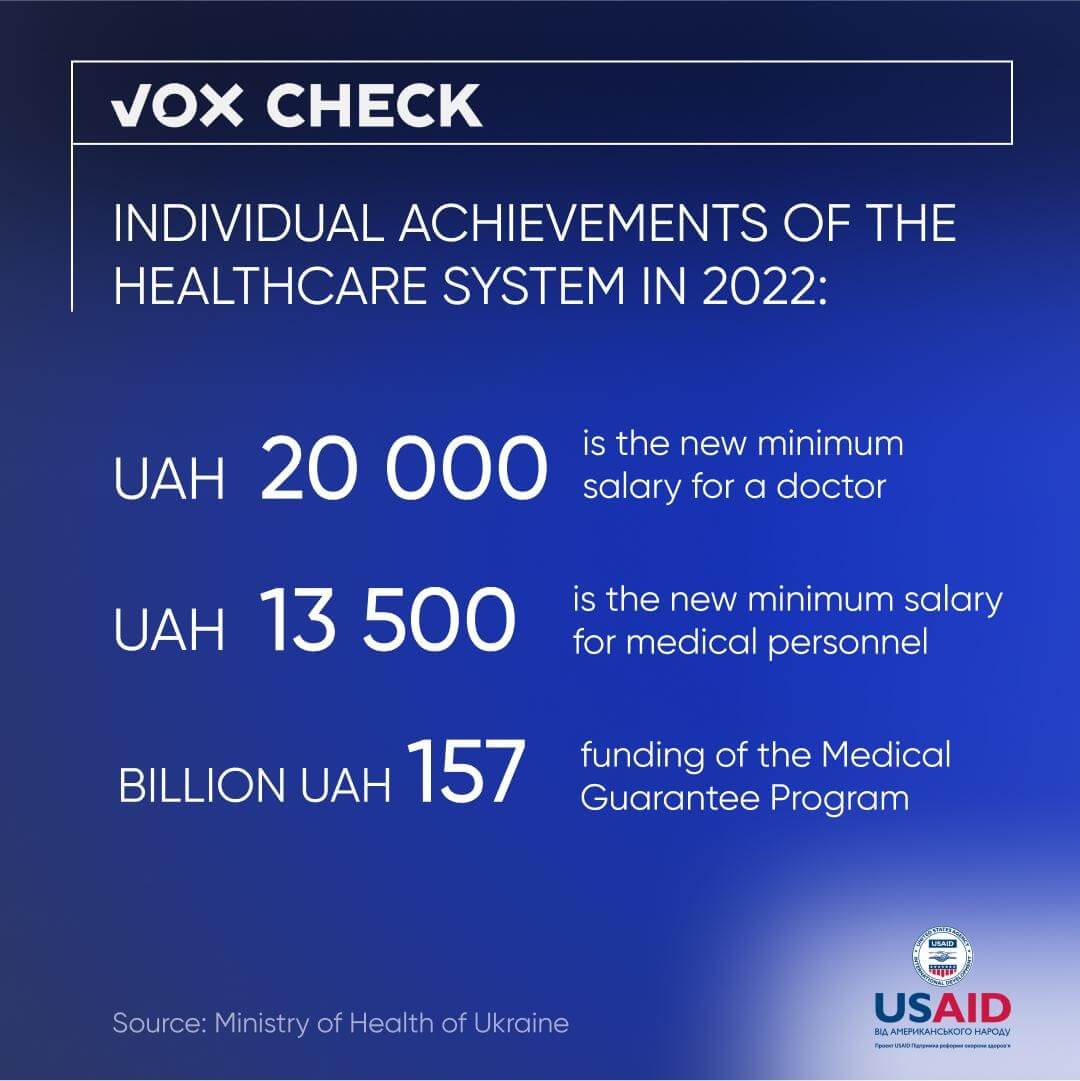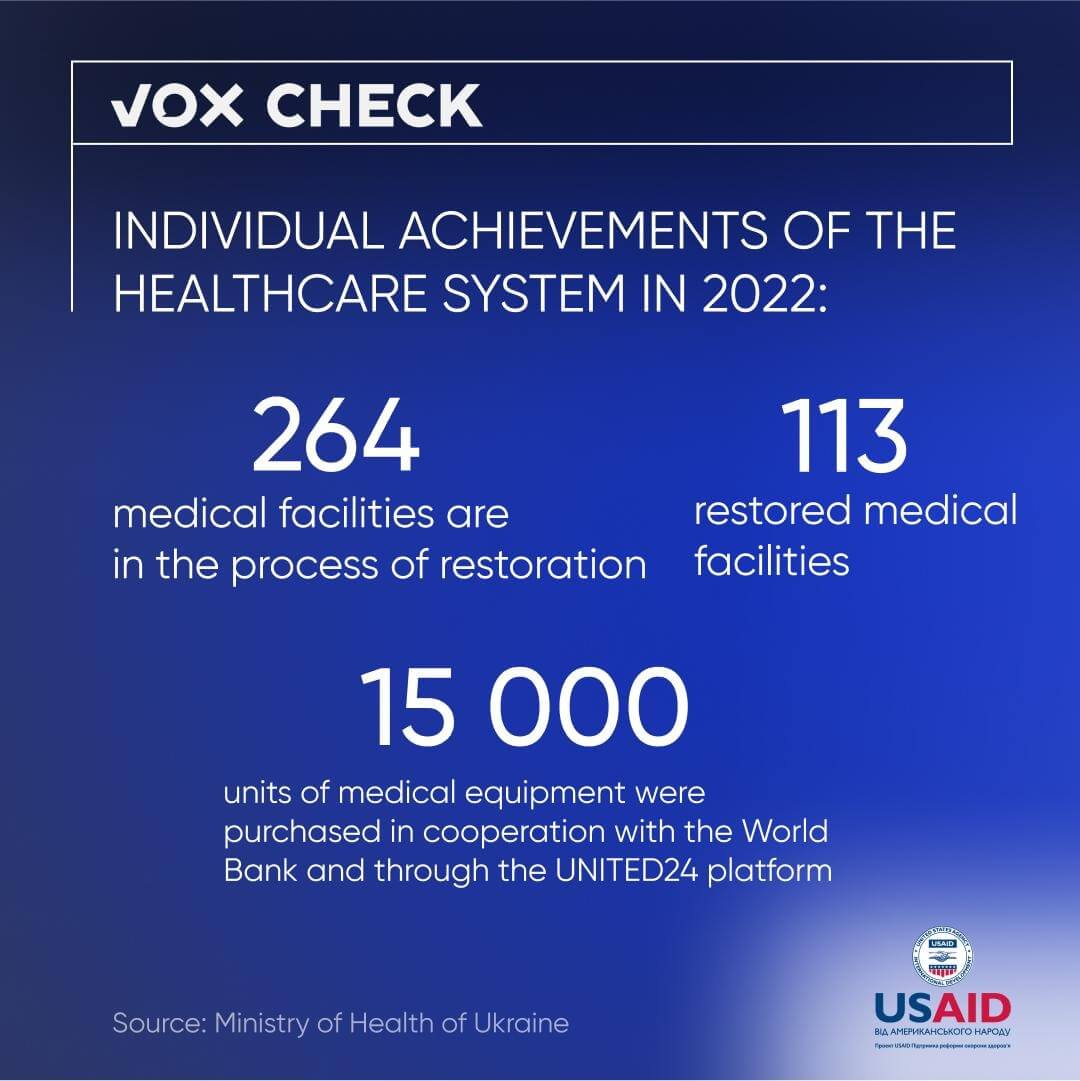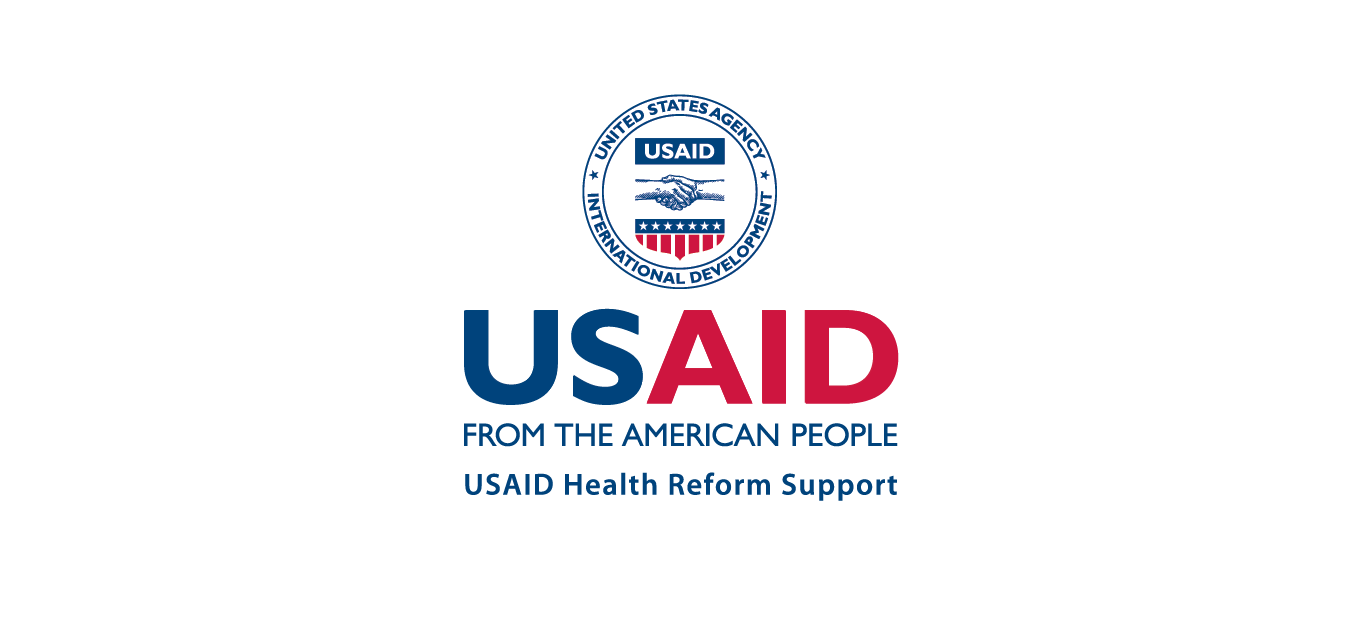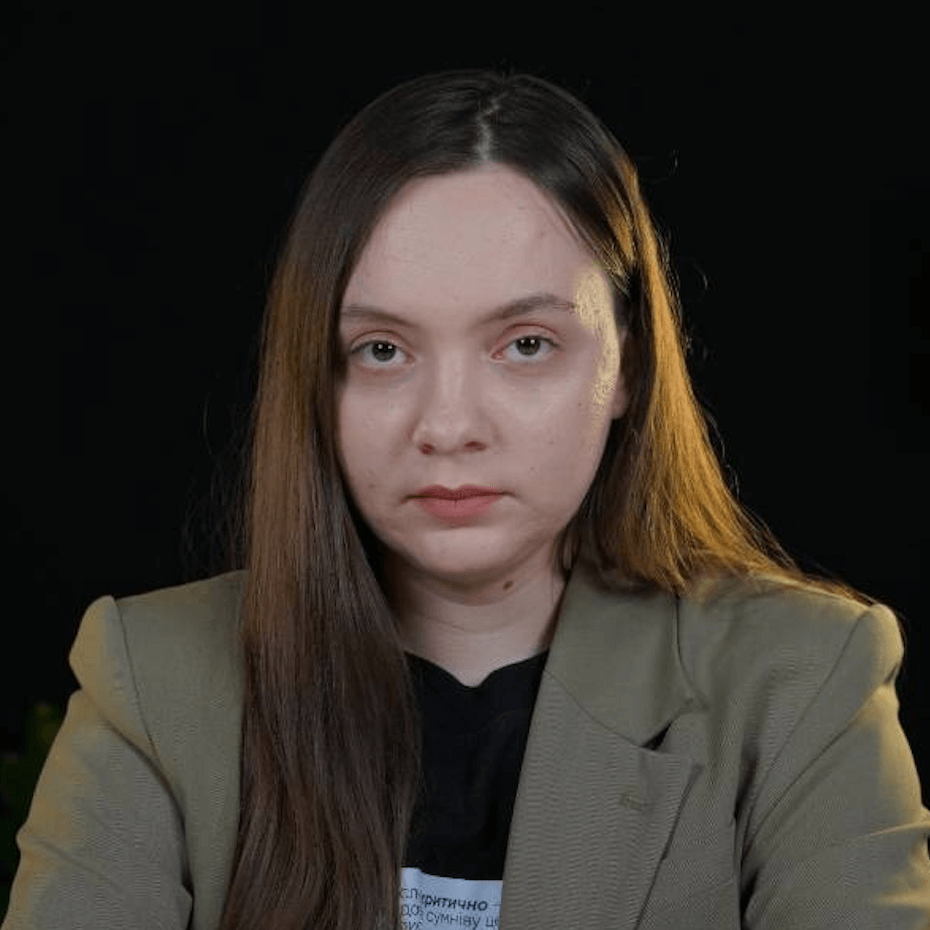This time, the focus of propagandists is on innovations in the medical system. They manipulate and twist the words of the Minister of Health of Ukraine about canceling the norm of the number of patients per doctor. Supposedly, because of this and low salaries, doctors will massively leave the country to find better conditions abroad. Moreover, the quality of treatment will decline. Therefore, there can be no talk of continuing the medical reform, and it needs to be canceled after the war.
With the support of the USAID Health Reform Support project, VoxCheck analyzes and refutes public health narratives spread in the information space of Ukraine, Belarus, and russia on a weekly basis.
Pro-Russian Telegram channels write that in Ukraine, it is necessary to increase the salaries of doctors rather than funding medicine “on a residual principle“. According to them, everything should be done to prevent doctors from leaving the country in search of better working conditions and higher salaries. In this context, they spread a quote from the Minister of Health of Ukraine, Viktor Liashko: “We have removed barriers that prevented family doctors from signing more than 2,000 declarations. If you come to a medical institution now, they do not have the right to refuse you in signing a declaration“. In the opinion of propagandists, this will lead to excessive overload of doctors and a decrease in the quality of services provided.
What’s the reality?
In Ukraine, medicine is financed not on a residual principle, but on the principle of “money follows the patient”. The corresponding financial system was introduced by the Law of Ukraine “On Financial Guarantees for the Provision of Medical Services”, which came into force in 2018. Doctors receive funds for the services they provide, not for the size of the premises, the number of beds or medical personnel in the hospital where they work. Income depends on the amount of work performed. The Ukrainian system was actually funded on a residual principle in the past when the inherited from the USSR model of healthcare financing by Mykola Semashko was in place. According to this model, hospitals received funds based on the number of hospital beds and square meters of infrastructure, rather than the number of services provided by doctors.
Due to the full-scale invasion, the Ministry of Health of Ukraine changed its approach to financing the healthcare system for a certain period of time. In March 2022, the Cabinet of Ministers of Ukraine adopted a resolution, according to which each hospital was guaranteed to receive 1/12 of the annual funding from the National Health Service of Ukraine every month. This was done to maintain the system in a critical moment and ensure the uninterrupted operation of hospitals. From July, the payment system for actual services provided returned to the regions where there are no active hostilities. The simplified funding system remained for hospitals in the zone of active hostilities and temporarily occupied territories.
The last time medical workers’ salaries were increased was in January 2022. At that time, the government established financial guarantees for payments that continue to apply in 2023. The minimum wage for a doctor and pharmacist should be no less than 20,000 UAH, and for a nurse/paramedic and rehabilitation specialist — no less than 13,500 UAH. If hospitals do not have enough funds to pay salaries, they receive additional funding through a separate mechanism. Additional payments and bonuses are also provided at the discretion of the head of the healthcare facility. The level of complexity and responsibility of the work, its results, and the qualification of the employee are taken into account when calculating salaries.
The quote from Viktor Liashko was taken out of context. On the “Breakfast with 1+1” program, the minister indeed stated that the restrictions on the number of patients per doctor have been lifted. He explained the reason for this decision: “We have removed the barriers that prevented family doctors from signing more than 2,000 declarations to see how people migrate internally. You can now come, and they have no right to refuse you to sign a declaration regardless of where you sign it: whether in Kyiv or you came from Mariupol to Rivne region. So that we can see the real workload of the family doctor. From this, we will understand where to send young specialists and doctors who left temporarily occupied territories. This allows us to regulate the situation on the ground“. In other words, the restrictions were lifted not so that doctors would work overtime all the time and provide poor quality services as a result, but to understand where in the country there is a shortage or surplus of family doctors. And then work to effectively distribute human resources according to the needs of the population.
Source: Ministry of Health of Ukraine
This information piece was produced with the assistance of the United States Agency for International Development (USAID), provided on behalf of the people of the United States of America. This article’s content, which does not necessarily reflect the views of USAID, the United States Government, is the sole responsibility of Deloitte Consulting under contract #72012118C00001.
Attention
The author doesn`t work for, consult to, own shares in or receive funding from any company or organization that would benefit from this article, and have no relevant affiliations




